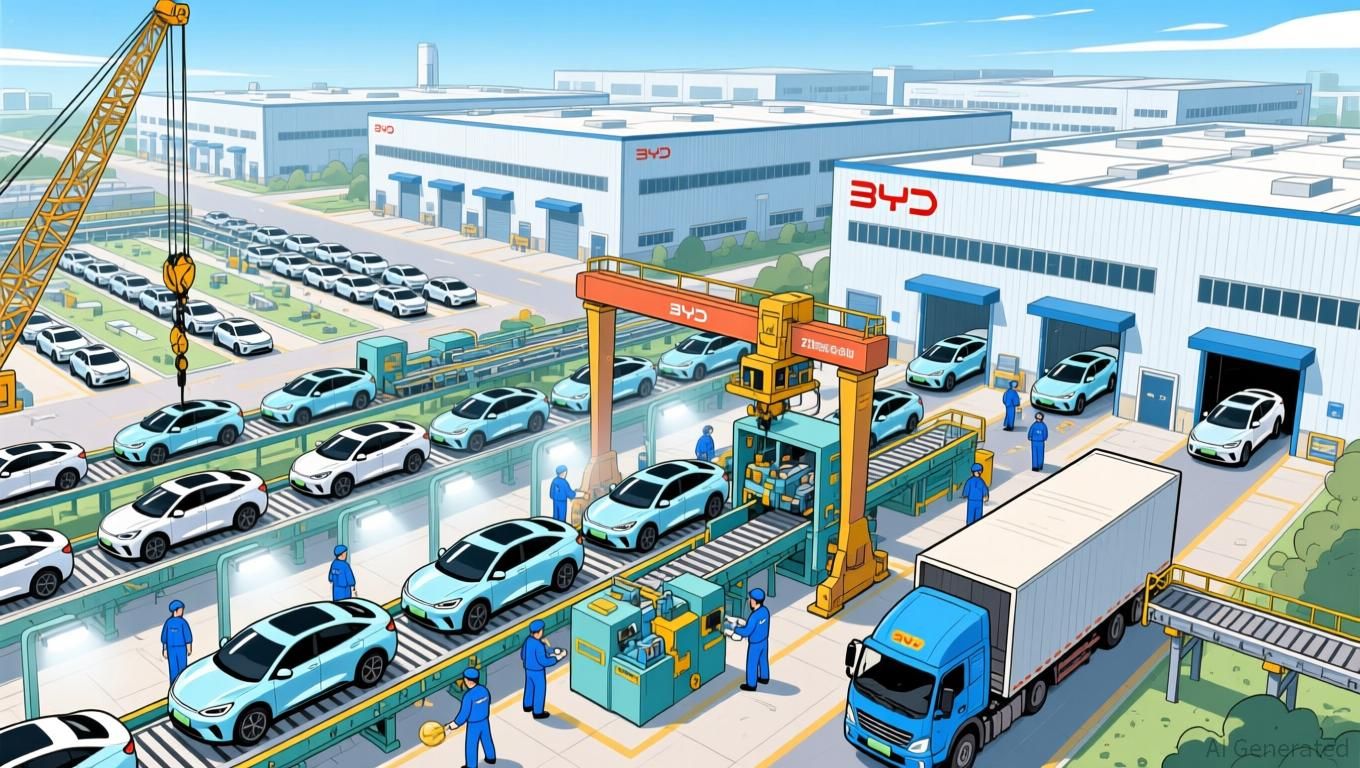Chinese electric vehicles push Ford to rethink its strategy as it faces major challenges and tariff issues
- Ford CEO Jim Farley warns Chinese EVs pose an "existential threat" to U.S. automakers , surpassing historical Japanese competition in scale and pricing risks. - Ford cancels three-row electric SUV, delays electric pickup to 2027, and prioritizes hybrids/commercial EVs amid $4.5B annual losses and 70% import tariffs. - BYD's Zhengzhou megafactory, producing 545K vehicles in 2024 and expanding to 20K employees, exemplifies Chinese rivals' aggressive production and market expansion. - Farley admits driving
Ford CEO Jim Farley has strongly cautioned that Chinese electric vehicle (EV) makers represent a fundamental danger to the survival of U.S. car companies, describing their manufacturing prowess and pricing tactics as a "whole new kind of risk" compared to the Japanese competition of the 1980s, as noted in a
For example, BYD’s Zhengzhou megafactory has more than doubled in area since late 2023 and now far surpasses Tesla’s Austin plant, based on satellite images and official records. The facility produced 545,000 vehicles last year and intends to hire 20,000 more workers in early 2025, demonstrating its rapid expansion, as reported by

Ford’s financial woes add urgency to its change in direction. The automaker posted a $1.4 billion loss in its EV division for the third quarter of 2024, contributing to a projected $4.5 billion loss for the year, based on a
In response to the Chinese challenge, Ford is turning its attention to more compact, budget-friendly EVs and bringing back classic models like the Capri. Farley also cautioned against "Trojan horse" strategies, where Chinese brands might use established names such as Mazda or Nissan to enter international markets, according to the MechHelp analysis. Ford’s updated approach seeks to combine cost savings with innovation, but Farley admitted that the chances of maintaining U.S. manufacturing are "shrinking with each passing day," as the MechHelp analysis observed.
Disclaimer: The content of this article solely reflects the author's opinion and does not represent the platform in any capacity. This article is not intended to serve as a reference for making investment decisions.
You may also like
Noomez's Scarcity Engine: Creating Value for Crypto's 2025 Bull Market
- Noomez ($NNZ) gains traction with a 28-stage presale using escalating prices, permanent token burns, and liquidity locks to create scarcity and 1000x return potential. - The deflationary model includes 280B fixed supply, 50% allocated to presale, with Vault Events at stages 14/28 triggering additional burns and airdrops. - Transparency features like the Noom Gauge dashboard and 15% liquidity locks, plus 66% APY staking rewards, differentiate it from speculative meme coins. - Stage 3 shows 51% price growt

Public Company's $IP Token Reserve Marks the Beginning of a Programmable IP Economy Era
- Crypto.com partners with IP Strategy, first public company to use $IP tokens as primary reserve asset. - Agreement includes custody, trading, and staking for 52.5M $IP tokens valued at $230M, boosting institutional IP token adoption. - Partnership enables regulated exposure to $80T programmable IP economy via Story Protocol's blockchain infrastructure. - Executives highlight infrastructure's role in securing IP assets while risks like liquidity and custody execution remain critical concerns.

Meta’s lead AI researcher Yann LeCun is said to be preparing to depart in order to launch his own company